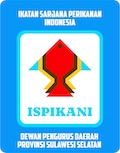Trends in Indonesia's Fishery Commodity Exports
DOI:
https://doi.org/10.35911/torani.v8i1.42086Keywords:
Export, trend, fishery commoditiesAbstract
Indonesia is one of the largest seafood producing countries in the world, with significant fisheries potential to support national economic growth. This study aim to analyzes the export volume and value trends of Indonesia's fishery products from 2018 to 2023, focusing on key commodities such as shrimp, tuna, seaweed, crabs, and lobster. The data used includes annual export volume and value for each commodity. The analysis results show that the volume of Indonesia's fishery exports fluctuated, with a significant increase until 2020 (1,262,830 tons) and a decline in 2021 and 2022, although it remained stable in 2023 (1,221,196 tons). The export value also showed a significant increasing trend, peaking in 2022 at 6,242,085 USD, before decreasing to 5,630,947 USD in 2023. Despite the decline in the last two years, the fishery sector in Indonesia continues to make a significant contribution to the national economy, with key commodities maintaining high competitiveness in the international market. These findings are important for the development of strategies that can boost Indonesia's fishery exports and strengthen its position as a leading global exporter.
References
Anis, A., Surya, F., & Saputra, R. 2022. Innovations in sustainable aquaculture practices: A pathway for Indonesian fisheries. Journal of Aquatic Sciences, 38(2), 115-130.
Badruddin, A., & Yuniarti, S. (2022). Sustainable aquaculture development in Indonesia: Challenges and opportunities. Journal of Sustainable Fisheries, 29(1), 55-72.
Food and Agriculture Organization (FAO). 2020. The state of world fisheries and aquaculture 2020: Sustainability in action. FAO.
Kahwa, S., & Sahabat, H. 2021. The economic impact of the COVID-19 pandemic on Indonesian fisheries. Fisheries Management and Ecology, 28(6), 402-410.
Kementerian Kelautan dan Perikanan. 2023. Statistik ekspor perikanan Indonesia. Kementerian Kelautan dan Perikanan.
Kementerian Kelautan dan Perikanan Republik Indonesia. 2023. Laporan tahunan sektor perikanan 2023. Kementerian Kelautan dan Perikanan.
Maharani, A. & Aswan, A. 2020. Enhancing fish processing technologies for improving export quality: Insights from Indonesia. Journal of Food Science and Technology, 57(12), 4692-4703.
Marzuki, I., & Juliati, E. 2023. Policy measures to enhance fishery exports in Indonesia: An analysis of trade barriers. Asian Journal of Trade and Commerce, 12(2), 115-130.
Purnama, H. & Widyastuti, R. 2021. Fishery management and its economic implications in Indonesia: A review. Journal of Economic Studies, 48(5), 1135-1150.
Rahman, A. & Meilianda, R. 2020. Eco-labeling in fishery products: Implications for sustainability in Indonesia. International Journal of Environmental Science and Technology, 17(4), 2357-2367.
Sari, D. A., & Hartono, R. 2022. Analyzing the competitiveness of shrimp exports from Indonesia in the global market. Asian Fisheries Science, 35(4), 589-604.
Setiawan, H. 2019. Fisheries sustainability and policy implications in Indonesia. Environmental Policy and Governance, 29(3), 203-213.
Smith, J., & Nguyen, T. 2023. The role of sustainable fishing practices in enhancing the economic viability of developing countries. International Journal of Fisheries Research, 45(1), 30-45.
Subhan, A., & Wibowo, E. 2022. Marine resource management and its economic impact in Indonesian coastal areas. Marine Policy, 132, 104679.
Tanjung, H., & Suprapto, N. 2023. The role of local communities in sustainable fisheries management: A case study in Indonesia. Fisheries Research, 254, 106013.
Yusran, U., & Mustika, R. 2020. Enhancing the quality of fishery products through sustainable practices in Indonesia. Journal of Food Quality, 2020, 1-10.
Zainuddin, A., & Farhan, R. 2022. Technology adoption in Indonesian aquaculture: Barriers and solutions. Aquaculture International, 30(3), 923-935.
Zulkarnain, D., & Rachmawati, I. 2021. Assessing the impact of climate change on fish production in Indonesia: A case study. Indonesian Journal of Marine Science, 15(3), 200-215.















